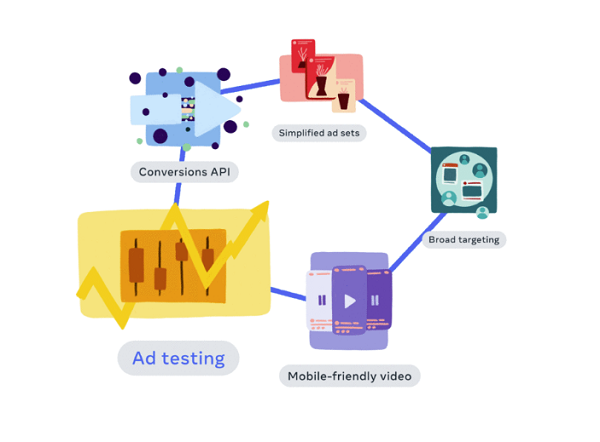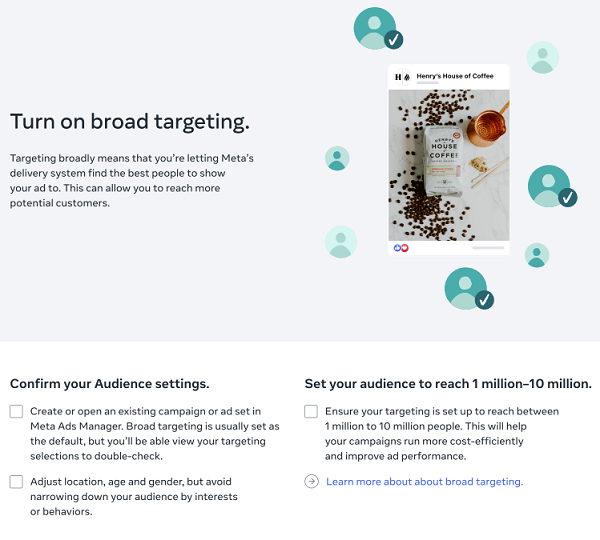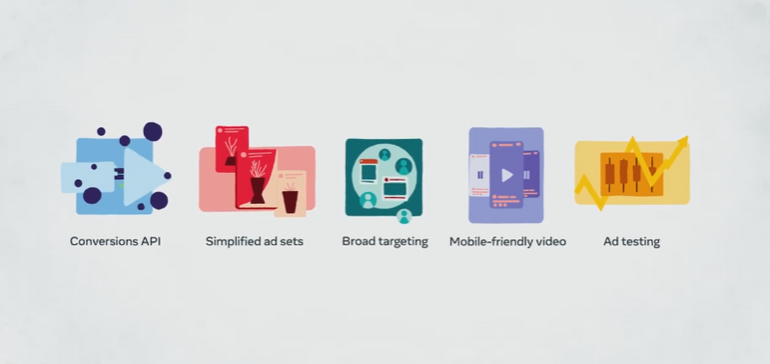Amid increasing data restrictions and changes in the digital advertising landscape, Meta is working hard to maintain ad revenue flows, which has forced it to re-assess staffing, re-align its priorities and change the way that its ad systems operate.
That’s led to fluctuating results on both Facebook and Instagram, and many advertisers have been frustrated at times by the amount of changes required, in order to re-optimize their campaigns.
Meta knows this, and as noted, it is re-aligning its systems in step. And as part of this, Meta recently launched its new ‘Performance 5’ framework, which is a set of five data-proven tactics that can help to improve advertising performance on Meta platforms.

As per Meta:
“This new set of top tactics is designed to help small business advertisers looking to improve their ad performance, and reduce cost per action on their campaigns.”
Looking to help SMBs get the most out of their campaigns, Meta says that advertisers should focus on these key elements.
Conversions API
By implementing Meta’s Conversions API, that will establish a direct connection between Meta ads and web events, including website purchases or “add to cart” actions.
Which is also not impacted by Apple’s ATT changes, as this directly connects your CRM data to the Meta ads platform, facilitating improved data flows despite rising restrictions.
“Running the tool alongside the Meta Pixel also helps Meta’s ad delivery system decrease how much an advertiser is spending. Advertisers with the Meta Pixel who set up the Conversions API saw 13% lower CPA on average”.
Simplified Ad Sets
Meta says that consolidating ads, ad sets, and campaigns will improve cost efficiency and performance.
“Leveraging similar creative among ad sets helps Meta’s delivery system work more efficiently and finds more opportunities for an advertiser’s budget.”
In other words, by making it easier for Meta’s automated systems to determine the right audience, you can see better results with your campaigns.
Broad Targeting
Many performance advertisers now swear by this – broad targeting now produces better results for Facebook and IG ads than more refined, more niche audience approaches.
Meta’s highly focused ad targeting has always been a key benefit of the platform, but with its automated targeting improving, and data restrictions limiting the effectiveness of certain audience segments, broad targeting is now a better approach in many cases.

As you can see in this overview, Meta now recommends that advertisers don’t use audience interests or behaviors in targeting. Which can feel counter-intuitive, but Meta says that this now produces better results.
Mobile-friendly Video
Of course, it’s Meta in 2022, so video is part of its top recommendations.
“Advertisers that use mobile-first creative (i.e., vertical videos and keeping them at 15 seconds or less) spend less on their campaigns than those who use non-mobile-first creative.”
Short-form video is the trend of the day, and advertisers should also consider this in their approach.
Ad Testing
Meta’s last key recommendation is A/B testing, focused on creative, targeting or ad set structure, which will provide more context to make smarter decisions about your campaigns.
“Winning A/B tests decreased CPR by over 30% on average (compared to losing ads).”
In combination, implementing these ad approaches can have a big impact on your Facebook and Instagram ad performance, and it’s worth taking note of Meta’s recommendations, based on what it’s seeing across its apps.
Because as noted, the digital ad landscape is changing. Meta’s previously noted that it expects to lose around $10 billion in ad revenue this year due to Apple’s ATT update, with many Facebook and IG users switching off data tracking, which has forced a change in its ad approach.
Understanding this is key to making Facebook ads work for you in 2022 and beyond, which is why the Performance 5 is an important overview of key opportunities and updates.
You can check out the new Performance 5 hub to learn more, which includes a range of examples to illustrate these key points.



